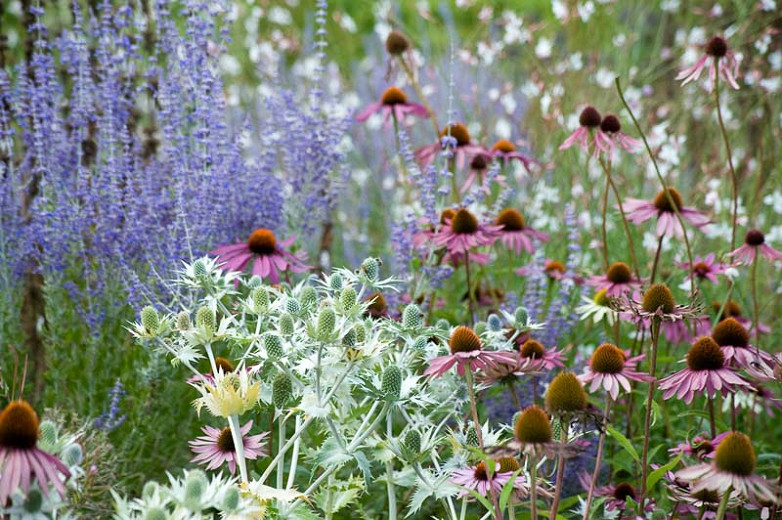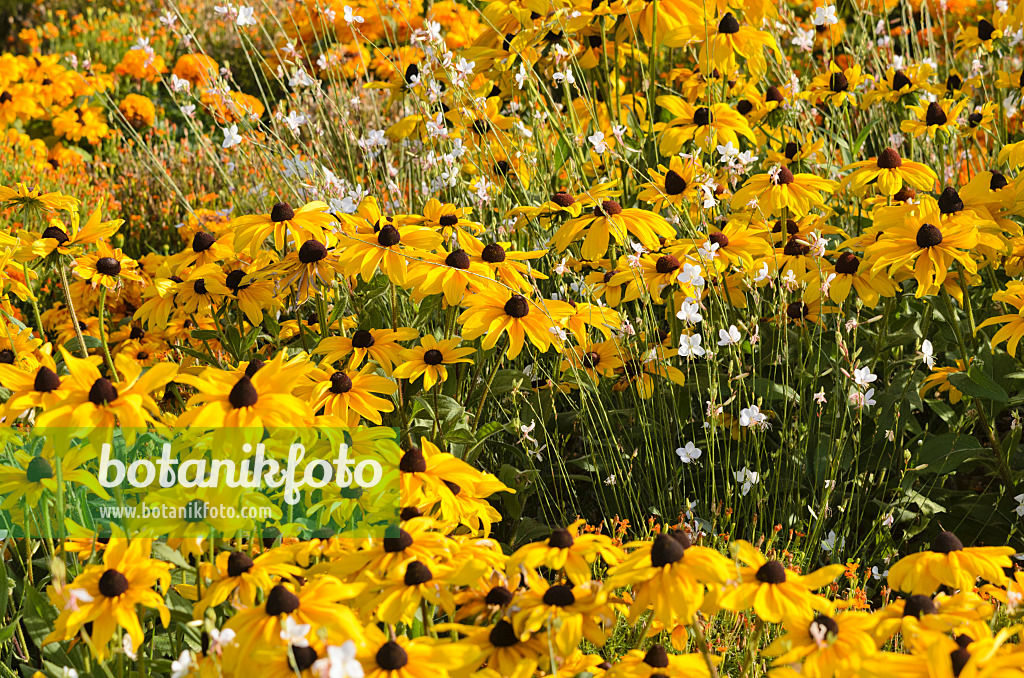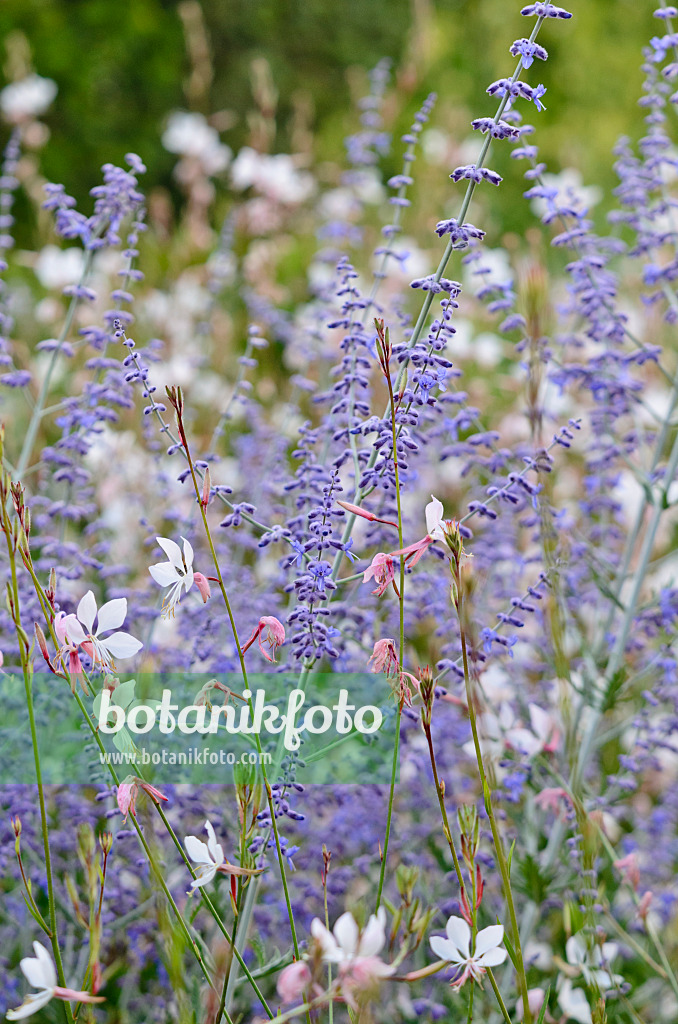Gaura Companion Plants That Will Make Your Garden Sing
Gaura Companion Plants That Will Make Your Garden Sing
Gaura is a beautiful, delicate perennial that blooms from summer to fall. Its airy, pink or white flowers are sure to add a touch of elegance to any garden. But gaura can also be a bit of a diva. It needs full sun and well-drained soil, and it can flop over if it's not supported.
That's where companion planting comes in. By planting gaura with other plants that have complementary needs and characteristics, you can help to create a more balanced and stable garden.
Here are a few of the best gaura companion plants:
- Coneflowers: Coneflowers are another heat-loving perennial that blooms from summer to fall. They come in a variety of colors, including pink, purple, and white. Coneflowers are tall plants, so they can help to support the flopping stems of gaura. They also attract butterflies and other pollinators.

- Echinacea: Echinacea, also known as coneflower, is another great companion plant for gaura. It has similar growing conditions and blooms at the same time. Echinacea is also a deer-resistant plant, which can be helpful if you live in an area with a lot of deer.

- Black-eyed Susans: Black-eyed Susans are a low-maintenance perennial that blooms from summer to fall. They come in a variety of colors, including yellow, orange, and red. Black-eyed Susans are drought-tolerant and can help to fill in the spaces between taller plants like gaura.

- Verbena bonariensis: Verbena bonariensis is a tall, airy perennial that blooms from summer to fall. It has a cascading habit, so it can help to soften the edges of a border or hide unsightly areas. Verbena bonariensis is also drought-tolerant and attracts butterflies and other pollinators.

- Russian sage: Russian sage is a tall, upright perennial that blooms from summer to fall. It has blue or purple flowers and attracts butterflies and other pollinators. Russian sage is drought-tolerant and can help to add structure to a garden.

- Salvias: Salvias are a diverse group of plants that come in a variety of colors, sizes, and shapes. Many salvias bloom from summer to fall, and they all attract butterflies and other pollinators. Salvias can be tall or short, upright or cascading, so there's sure to be a salvia that's perfect for your garden.

- Yarrow: Yarrow is a low-maintenance perennial that blooms from summer to fall. It has white, yellow, or pink flowers and attracts butterflies and other pollinators. Yarrow is drought-tolerant and can help to fill in the spaces between taller plants like gaura.

When choosing companion plants for gaura, it's important to consider the plants' needs and characteristics. Make sure that the plants have similar growing conditions and that they complement each other's colors and textures. By planting gaura with the right companion plants, you can create a beautiful and harmonious garden that will bloom all summer long.
Gaura is a beautiful flowering plant that can add a touch of elegance to any garden. But did you know that companion planting can help to improve its growth and health?
Companion planting is the practice of planting certain plants together to benefit each other. Some good companion plants for gaura include:
- Sunflowers: Sunflowers can help to attract pollinators to your garden, which will help to improve the pollination of your gaura flowers.
- Cucumbers: Cucumbers can help to suppress weeds, which can free up your time and energy to focus on other tasks.
- Beans: Beans can help to fix nitrogen in the soil, which can benefit your gaura plants.
- Lettuce: Lettuce can help to shade the roots of your gaura plants, which can help to prevent them from drying out.
- Marigolds: Marigolds can help to repel pests, which can help to keep your gaura plants healthy.
If you're interested in learning more about gaura companion plants, I recommend visiting Garden Wiki. This website has a wealth of information on companion planting, including a list of specific plants that are good companions for gaura.
Image of gaura companion plants
5 different images of gaura companion plants from Pinterest:
Image 1: Gauri and catmint. Gaura is a tall, airy plant with delicate flowers, while catmint is a short, bushy plant with blue flowers. They make a good combination because they have different heights and flower colors.

Image 2: Gaura and coneflower. Gaura is a tall, airy plant with delicate flowers, while coneflower is a tall, upright plant with large, daisy-like flowers. They make a good combination because they have similar heights and flower colors.

Image 3: Gaura and salvia. Gaura is a tall, airy plant with delicate flowers, while salvia is a tall, upright plant with spikes of colorful flowers. They make a good combination because they have similar heights and flower colors.

Image 4: Gaura and yarrow. Gaura is a tall, airy plant with delicate flowers, while yarrow is a short, bushy plant with flat-topped clusters of flowers. They make a good combination because they have different heights and flower colors.

Image 5: Gaura and butterfly bush. Gaura is a tall, airy plant with delicate flowers, while butterfly bush is a tall, upright plant with clusters of nectar-rich flowers that attract butterflies. They make a good combination because they have similar heights and butterfly bush attracts butterflies which help pollinate gaura.

Post a Comment for " Gaura Companion Plants That Will Make Your Garden Sing"